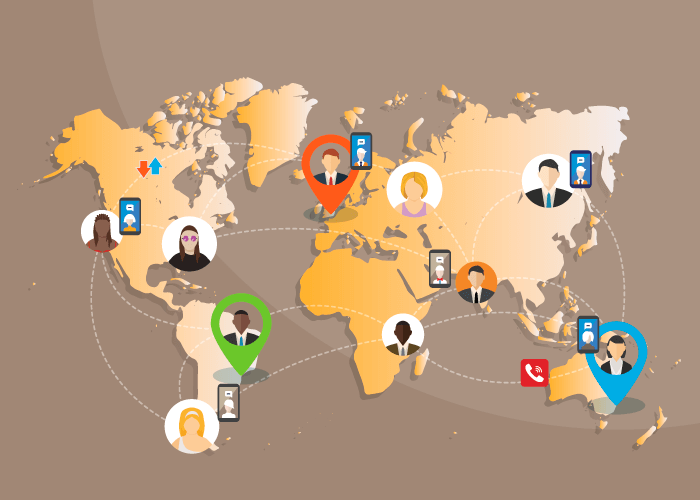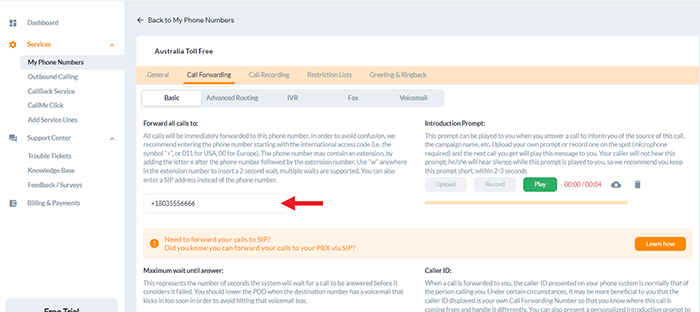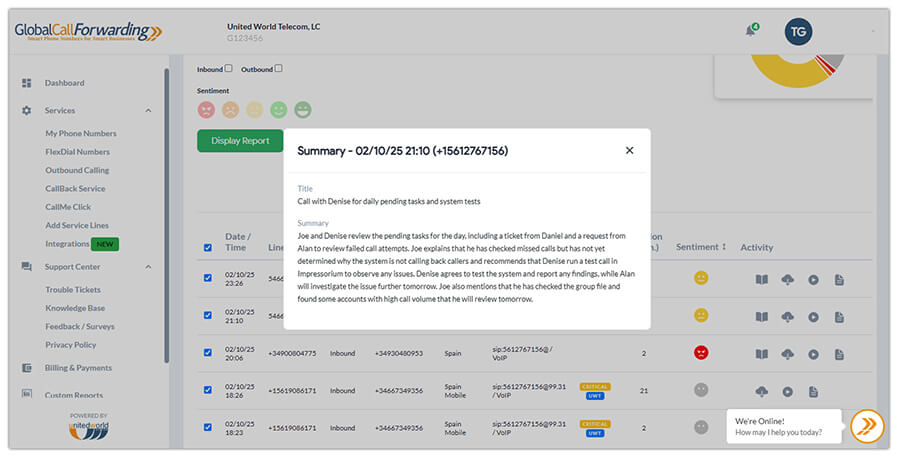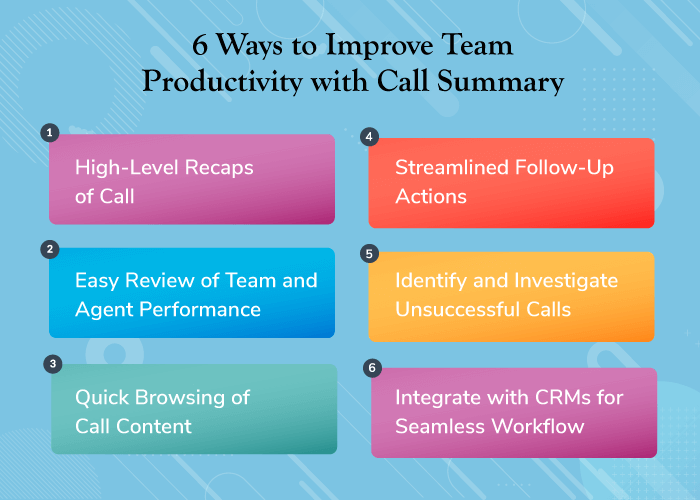Expanding your business globally is exciting, but staying connected across borders is an entirely different challenge.
Managing voice communication across time zones, underdeveloped in-country telecom infrastructures, and complicated regional regulations can become overwhelming. Many businesses experience dropped calls, inconsistent service, and increasing costs, all while trying to juggle multiple providers and platforms.
What works well in one country might fall apart in another, creating confusion for teams and frustration for customers.
At the core of all this is a weak communication network—one that can quietly deteriorate productivity, damage customer relationships, and eventually put deals at risk.
Managing voice communication globally isn’t just about having phone lines in place. It’s all about real-time coordination between teams, customers, and borders with clarity and consistency. In the absence of a proper setup, business growth might turn into chaos.
Fortunately, with the rise of cloud telephony, businesses can unify their global voice operations on a single, scalable platform. Here’s how to do it effectively.
In this guide, we’ll cover:
Why Businesses Need Reliable Global Voice Communication
Reliable voice communication is still one of the most effective ways to build trust and resolve complex issues. Industry analysis indicates that communication breakdowns are responsible for over 70% of business failures. More strikingly, communication inefficiency costs an annual loss of $37 billion in productivity. And globally distributed teams rely on voice communication for coordination, decision-making, and sales that can’t happen over chat or email.
But managing voice across borders introduces complexity:
- Local presence matters for customer trust
- Telecom regulations differ by country
- Carrier coverage varies
- International calling can prove expensive
- Latency and call quality can degrade without the proper infrastructure
When you have a reliable global phone service for your business, you can handle customer calls across regions and time zones.
Cloud-based telephony solutions can make global call management easy and streamlined. With broad global coverage and advanced call handling capabilities, your business can establish a local presence in multiple target regions, all without worrying about dealing with various carriers—your global telephony provider will handle this for you.
Then simply route global customers to the right sales team or support center efficiently, thereby reducing delays and enhancing customer satisfaction. You can even add global voice to your CRM or help desk with telephony integrations, further centralizing business communication. Utilize this alongside call analytics, IVR, call recording, and other advanced features to create a comprehensive, fully functional global phone system.
Routing calls over the cloud also guarantees superior call quality by lowering latency, jitter, and dropped connections. Additionally, with built-in redundancies and automatic failover routing, reliable providers help ensure that no call or opportunity is missed, even in an emergency. Well-managed global communication ensures strong security. The integrity of telecom systems is vital in protecting sensitive information and ensuring service reliability—read more about the importance of reliable phone services straight from our experts.
All this is to say, a managed global voice setup is crucial for effective global operations, preventing communication failures, and growing a global customer base.
Infrastructure That Speaks Global: Set Up the Right Way
So, what do you need for global business communication?
First and foremost, establishing a robust international voice service demands careful consideration of the right technology and resources.
Before you launch global voice operations, you need a foundation that can scale. That includes:
- A provider that offers international phone numbers, including local and toll-free options
- Routing tools that handle call flows across time zones, languages, and departments
- Compliance with telecom regulations in each region
- Integration with CRM, helpdesk, and analytics systems
- Real-time monitoring to ensure call quality and uptime
- Reliable and responsive support from your telephony provider
With the right setup and global telephony partner, businesses can operate globally without sacrificing clarity, consistency, or control.

How to Manage Global Voice: 10 Tips
Managing phone networks globally is challenging when you don’t know where to start. Here are the core strategies to help you manage global voice services at scale—whether you’re building support coverage, optimizing call quality, or entering new markets:
1. Map Out Your Global Voice Footprint
Having a thorough understanding of your target markets is essential when expanding internationally. Identifying key regions and locations can help you build an efficient and cost-effective global voice infrastructure. Here’s how to approach it strategically:
- Explore Customer Locations & Growth Markets: Begin by mapping out the locations of your current customers and identifying where you will look for future growth opportunities. Understanding these regional practices helps you determine where to establish voice presence to ensure responsive, localized service.
- Align with Market Research & Business Goals: Use market research and global expansion strategies to identify high-potential regions for telecom services. Your voice infrastructure should support your growth strategy. Prioritize markets where your presence will directly support revenue opportunities.
- View Operational Hubs & Team Distribution: Check for the locations of your support teams, sales offices, and remote workers. Seamless internal communication between global teams is crucial for operational efficiency and delivering a unified customer experience.
- Account for Regulatory & Compliance Requirements: Telecom compliance and regulations vary widely by region. Understanding these legal requirements early helps you choose compliant voice solutions and avoid future roadblocks. Alternatively, you can work with a global telephony provider with experience managing compliance requirements.
- Simplify Call Management with the Right Tools: Managing global call routing across multiple systems is a difficult task. Look for providers that offer centralized tools to build, manage, and intelligently route calls across borders, simplifying your IVR setup and ensuring every call reaches the right destination.
2. Choose Number Types That Fit Customer Needs
Your global phone numbers are more than just contact points; they are strategic assets that can significantly impact customer engagement and brand perception. Select the phone number type that best suits your business needs to develop stronger customer connections across your international markets.
Once you understand which locations and teams need to be covered, you can decide how to spread your voice coverage:
- Multiple local or toll-free numbers for different target markets
- Voice coverage for hard-to-reach regions
- Regional support hotlines receiving calls from neighboring countries (example – the LatAm support center supporting all of South American customers)
- Numbers supporting inbound and outbound calling, and so on.
Choose phone numbers for your global voice strategy based on intent:
- Local phone numbers — use local recognizable area codes and boost answer rates and establish in-market trust.
- International toll-free numbers (ITFS, UIFN) — provide a free, convenient way for customers to reach you.
- Local 2-Way Voice numbers — enable outbound and inbound calling with local caller ID.
Beyond functionality, your number type should align with your brand positioning and customer expectations. A thoughtful approach ensures your business remains accessible, familiar, and relevant in every market.
Not sure which phone number type fits your needs? Check out our guide to international phone number types or chat with our global communications experts for custom recommendations for your specific business.
3. Ensure Global Compliance and Network Security Requirements
Telecom regulations vary dramatically across countries—especially in terms of number registration, caller ID rules, and data protection.
Global voice communication demands strict adherence to security and regulatory standards. As your business expands across borders, it is essential to collaborate with a global telephony provider that adheres to telecom regulations in every region and maintains a secure infrastructure.
Look for providers who host their systems in Tier-rated data centers, offer security features such as two-factor authentication, and utilize encrypted connections for voice traffic. They should use a secure global voice network with 24/7 monitoring and PCI-compliant payment processing.
Additionally, ensure that the provider conducts regular network assessments and carefully manages vendor relationships to maintain compliance with relevant regulations. These practices are crucial for safeguarding sensitive data, maintaining uninterrupted communication, and fostering customer trust on a global scale. With proactive support and custom security features, your provider can help you stay compliant and secure, regardless of where your business operates.
4. Optimize Call Quality Across All Devices and Networks
Global communication requires consistent, high-quality audio. Poor call quality leads to missed information, frustrated teams, and lost deals. Achieving high-quality global phone communication requires more than just a stable internet connection—it demands a robust, redundant infrastructure for resilience and clarity.
To improve voice quality, choose a provider that:
- Has global Points of Presence (PoPs) and multiple layers of redundancy
- Consistently monitors call traffic for latency, jitter, and packet loss
- Tests number connectivity regularly across countries
- Remains responsive 24/7 for any network or quality issues
At Global Call Forwarding, we offer 24/7 phone and live chat support to identify and resolve issues before they affect communication. We prioritize a reliable global network infrastructure and continuous monitoring and testing to guarantee clear voice communication, with a 99.99% uptime assurance.
5. Consolidate Voice Operations on a Unified Platform
There is unnecessary complexity and operational costs involved in managing multi-carrier phone services across various locations. Managing separate providers in different countries creates complexity—multiple contracts, inconsistent SLAs, and higher support overhead.
Instead, centralize with one provider that offers:
- Full geographic coverage
- One interface for number management and call routing
- Unified billing and reporting
Telecom consolidation simplifies administrative tasks, minimizes errors, reduces costs, and provides a consistent user experience for your global teams. Look for a provider that offers complete phone number coverage, advanced system capabilities, and in-depth expertise in global voice to unify and optimize your communication infrastructure.
6. Integrate Voice with Core Business Tools
Integrating your global phone system with core business applications, such as CRM platforms, helpdesk software, and PBX systems, is essential for efficient business operations across teams and markets.
Softphone integrations can offer the following benefits:
- Enabling click-to-call within CRMs like Salesforce or HubSpot to manage calls directly within CRM pages
- Automatically logging calls and accessing call history during support interactions to reduce manual, time-consuming work
- Integrating AI and analytics to analyze call traffic with transcripts, recordings, and customer sentiment.
This integrated approach not only simplifies workflows but also supports a scalable and responsive global voice communication system.
7. Expand Global Coverage with Routing Strategies
As you scale, it’s not just about answering calls—it’s about routing them intelligently. This ensures that every caller connects with the right person at the right time. Efficient call management is crucial for supporting your customers where they are, delivering exceptional customer experiences, and optimizing agent productivity across diverse time zones and geographical locations.
Common routing strategies for global customer support include:
- Time-of-day routing to follow global business hours
Geographic routing to match callers with local support teams
IVR flows to pre-qualify and direct inquiries
By strategically setting up your global teams and implementing these intelligent routing rules, you ensure that every customer interaction is handled promptly. Optimizing call handling minimizes wait times, enhances first-call resolution rates, and contributes to improving customer satisfaction.
8. Monitor Voice Performance and Adapt
Global voice systems aren’t “set-it-and-forget-it.” Consistent monitoring of your global phone service is essential for maintaining high-quality communication and operational efficiency.

Track call metrics and KPIs such as:
- call volume
- connection rates
- average call duration
- first-call resolution rates, etc
These metrics help identify trends, measure agent productivity, and identify areas for improvement.
Take this a step further with AI-driven call insights (e.g., transcription, keyword detection, sentiment analysis) to uncover patterns and optimize support and sales performance. Providers like Global Call Forwarding offer advanced analytics that provide deeper insights after each call.
By leveraging these tools, businesses can make informed decisions to optimize customer service, focus on practical training, and refine their communication strategies. Regular monitoring ensures that your global voice operations remain aligned with business objectives and customer expectations.
9. Build Redundancy into Your Voice Infrastructure
Reliability is critical in global communications—especially when serving customers across multiple regions and time zones. To ensure business continuity, build redundancy into your voice infrastructure. This includes working with providers that offer geo-redundant data centers and failover routing, so that if one point of presence (PoP) or carrier fails, calls are automatically rerouted without disruption.
You can also consider multi-provider SIP failover, where outbound or inbound calls can be redirected to a backup network in case of downtime. Combined with a disaster recovery plan and call monitoring, redundancy safeguards your communication flow—helping you avoid missed calls, frustrated customers, and reputational risk.
10. Localize Your Voice Presence
Customers are more likely to trust and engage with brands that appear local and speak their language. Localizing your voice presence goes beyond offering a local number with recognizable area codes. It involves adapting to the language preferences, cultural expectations, and time zones of your target markets.
This might mean:
- Offering IVR prompts in local languages
- Scheduling live support during regional business hours
- Routing calls from certain regions to regional centers
- Using local caller IDs when making outbound calls, and so on.
Localization and customizing your international local presence for each market also improves routing accuracy, as calls can be directed to regional teams best equipped to handle inquiries. The result is a more personalized experience that builds trust, reduces friction, and drives customer satisfaction in each market you serve.
Go Beyond Connectivity with Global Call Forwarding
Managing voice communication on a global scale takes more than just buying phone numbers. It requires smart routing, consistent call quality, seamless integration, and the ability to adapt across regions and time zones.
At Global Call Forwarding, we help businesses access all of this in one place. With us, you can get:
- International phone numbers in 160+ countries
- Local 2-Way Voice for inbound and outbound communication
- Custom call routing, IVR flows, and failover
- Outbound calling with local caller ID, softphone apps
- CRM integrations and AI Call Insights for smarter decision-making
Our platform supports a scalable, reliable voice infrastructure designed for global operations, enabling seamless connections with customers worldwide without the need for physical offices. We can help you set up efficient handling of global inbound and outbound calls, crucial for customer support, sales, and operations.
Whether you’re expanding into new markets or improving customer support across time zones, we make it easier to stay connected and in control.
Contact our team to learn how we can help you manage global voice communication more effectively.




















